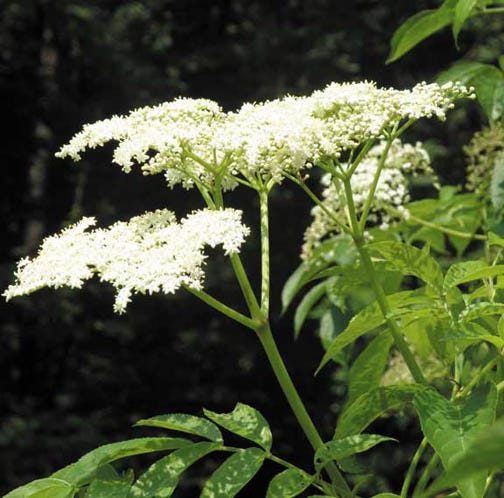Saint Something-or-Other
Several years ago, Saint-Germaine became the darling of the cocktail set. The French liqueur was advertised as being made by a secret process involving elder blossoms—and named, ironically, for an eighteenth-century alchemist whose real name is unknown. It was sold in a fancy bottle, and—for a few years—it added a certain je ne sais quoi to all sorts of high-faluttin’ potables.
I, naturally, will try anything (at least once), so I bought one of those fancy French bottles, and gave it a try. One of my first experiments was a variation on a martini. I replaced the vermouth with Saint-Germaine and swapped a sprig of lavender for the olive garnish. ‘Twas not a bad summer drink, but it suggested another try. Next a gin-and-tonic, using elderflower tonic, a lemon twist, and a float of Saint-Germaine. Also more-than-acceptable. These summery drinks led to something lighter, easier to drink (in quantity) on the patio: a highball of equal parts gin and Saint-Germaine, with two thick slices of lemon (one squeezed, one as garnish), in a tall ice-filled glass, topped with six parts soda water.
By the following Spring, the fancy bottle went dry. I suppose I could have gone back to the liquor store, but what would be the fun in that? Especially with elderberry bushes in bloom, practically everywhere (as they are right now). This is what I did:
Elderflower Cordial
Ingredients
2 quarts Elderberry blossom flower heads
1/2 lemon, sliced thinly
1 grapefruit, zest only
4 tangerines, sliced thinly
2 quarts heavy syrup
Method
Snip the flowers off the stalks, leaving as little stem as possible, into a large non-reactive container. Add citrus fruits.
Cover with warm heavy syrup. Cover with plastic wrap and place in a cool, dark place to rest for several days (until fragrant).
Strain the flowers and debris off with cheesecloth. Combine three parts scented syrup to one part 80-proof vodka. The goal is 20-proof alcohol by volume. Fill a large jar (or jars) with liquid and store in a cool dark place until it has cleared.
After it rests a while, you may notice some fine sediment at the bottom—at that point, you can decant carefully into bottles. (you can also filter through a paper coffee filter)
Notes
Harvest the flowers early in the morning—before bees have had a chance to collect all the nectar for themselves.
Trim the flowers from the stems over a large bowl. Insects love these flowers for the same reason we do, their fragrant nectar. The insects, being heavier than the blossoms, will tend to collect at the bottom, making their removal easier. Don’t worry that a few might wind in the jar; a month in strong alcohol is sure to kill any bacteria they might be carrying.
Heavy syrup is made by heating three cups of sugar in two cups water, and stirring until completely dissolved.
Don’t pick ALL of the available elderberry blossoms— or there won’t be any berries, later on! In the summer, you can make wine (elderberries have been known as “the English grape”), jelly and syrup from the ripe berries.
WARNING: Parts of the plant (leaves, stems, and probably roots) contain cyanide-like toxins. Be careful to exclude any of those parts when using elderberry flowers or fruit in any recipe.
After a few years, I still have some of my homemade knock-off Saint-Germaine, and it still has lots of the original elderflower fragrance. Since summer has arrived with a vengeance, it’s time to put some of it to use.
Apparently, Mary Pettibone Poole was on to something when she wrote “Alcohol is a good preservative for everything but brains.” And, perhaps even more to the point when she added, “The next best thing to being clever is being able to quote someone who is.”
Paid subscribers to these substack pages get access to a complete edition of my novella: Noirvella is a modern story of revenge, told in the style of film noir. They can also read the first part of Unbelievable, a kind of rom-com that forms around a pompous guy who is conceited, misinformed, and undeservedly successful. Both books are sold by Amazon, but paid subscribers get them for free!
Also, substack pages (older than eight months) automatically slip behind a paywall—so only paid subscribers can read them. If you’re interested in reading any of them, you can subscribe, or buy them in book form (I’ve released two volumes of Substack Lightnin’ on Amazon).
Meanwhile, it is easy to become a paying subscriber (just like supporting your favorite NPR station). It’s entirely optional, and—even if you choose not to do so—you’ll continue to get my regular substack posts—and I’ll still be happy to have you as a reader.


